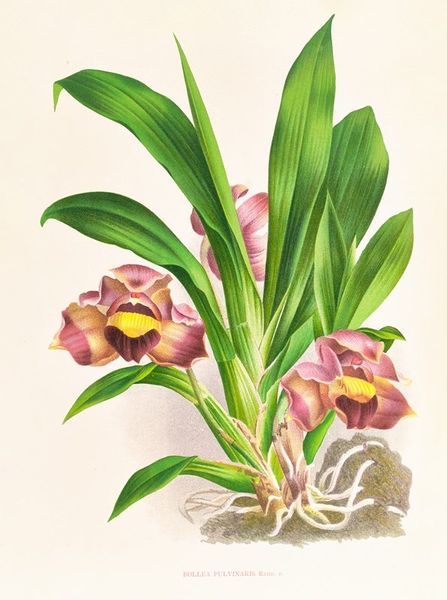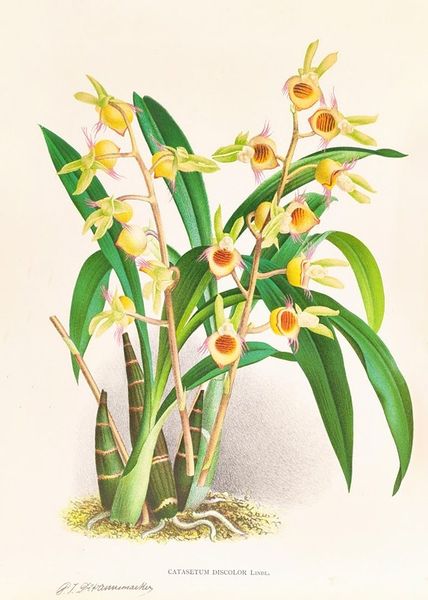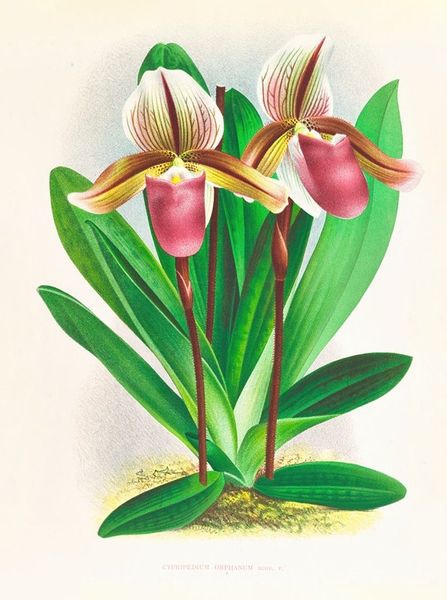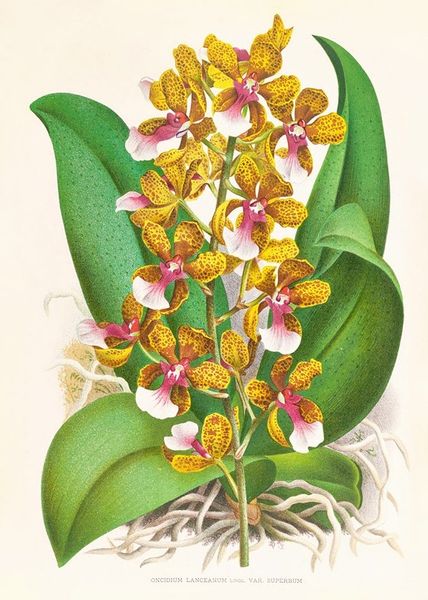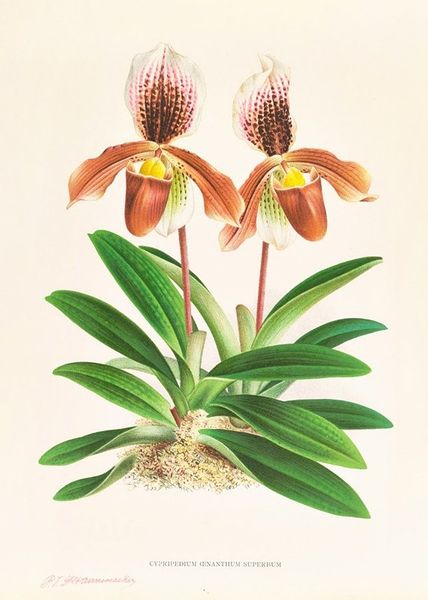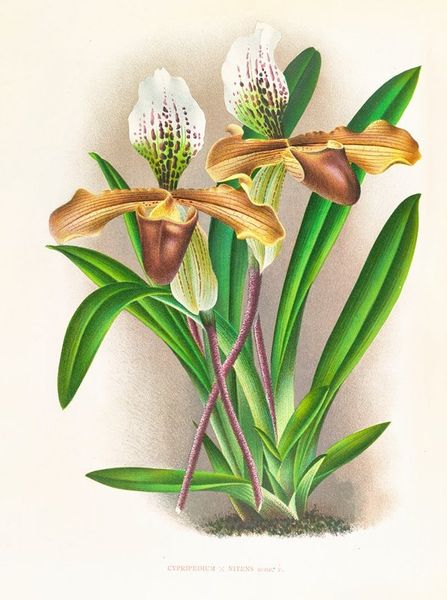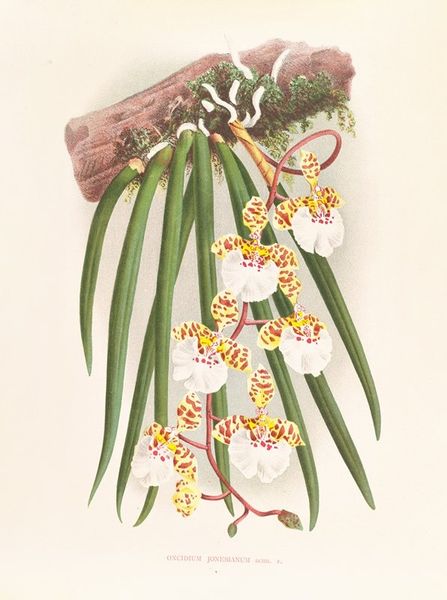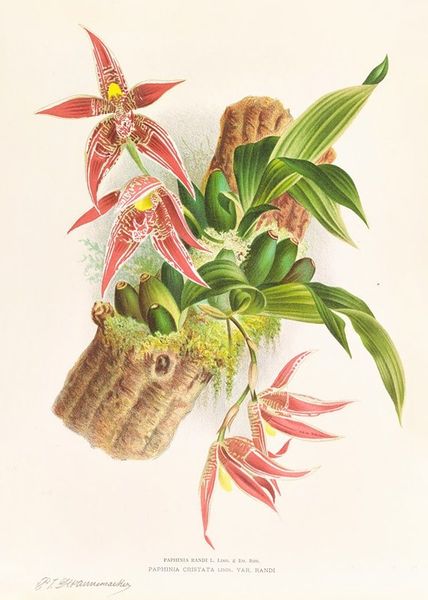
painting, watercolor
#
painting
#
watercolor
#
botanical photography
#
watercolour illustration
#
botanical art
#
realism
Copyright: Public Domain: Artvee
Curator: This botanical watercolor, titled "Oncidium kramerianum," was created by Jean Jules Linden sometime between 1885 and 1906. It is a highly detailed depiction of an orchid. Editor: My first impression is one of meticulous observation and surprising stillness. There's an inherent contradiction in capturing such vibrant life in a static image, isn't there? The details of the wood and foliage are extraordinary. Curator: Indeed. Linden’s work emerges within a historical context steeped in colonial exploration and scientific classification. Botanical art served a crucial function during this era, documenting new species discovered in colonized lands. It underscores the intersections of science, imperialism, and the Western gaze. What does this suggest about labor, perhaps, and its relationship with nature in the time of the Second Industrial Revolution? Editor: Well, it immediately highlights the labor-intensive process behind both its subject and its execution. Consider the actual growing of this orchid and how much expertise is required for botanical observation in rendering the delicate structure of the leaves, flowers and the hand-made basket itself. Each element involved careful cultivation. The basket, so carefully woven, shows just how deeply people's livelihood was embedded in materials, rather than technology. The whole picture is a statement about work, and the different levels upon which one relies for life itself. Curator: Precisely. The composition subtly hints at hierarchies. The orchid, elevated and highlighted, symbolizes wealth and exoticism—reflecting colonial values that privilege certain forms of life. Furthermore, the precision and care taken mirrors the dominant aesthetic values and what these artists saw as beautiful in the botanical world. Editor: But there's a flattening effect, too. Watercolor, as a medium, often blurs the lines between artistry and illustration. The choice of rendering this exotic plant in watercolor speaks of an inherent process of value assessment, not of nature, but in our interaction and transformation of the nature surrounding us, if that makes sense. Curator: Absolutely. The artwork functions as both an artistic rendering and a scientific document, thereby contributing to and participating within power dynamics linked to how these floral samples were circulated back to Europe. Editor: Yes, that's what makes it endlessly engaging—this tension between what we think of the artwork and what it *is*. We are both implicated in this discourse. Curator: Ultimately, Linden’s "Oncidium kramerianum" is much more than a pretty picture. Editor: Exactly, more like a document that prompts us to look closer into our relationship with labor and materials from nature.
Comments
No comments
Be the first to comment and join the conversation on the ultimate creative platform.
